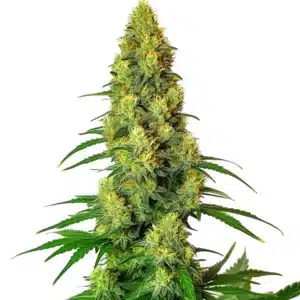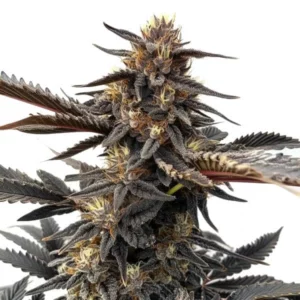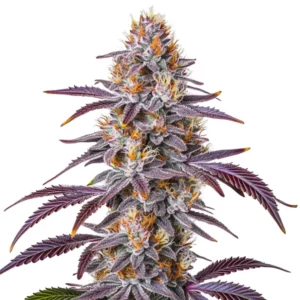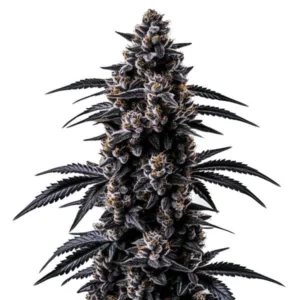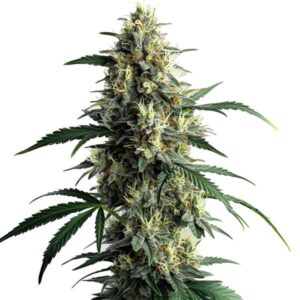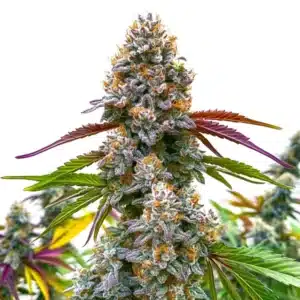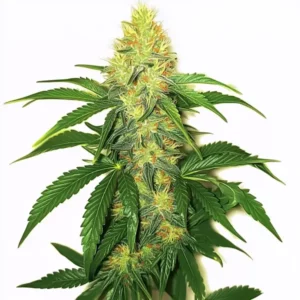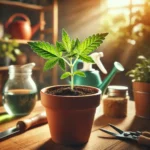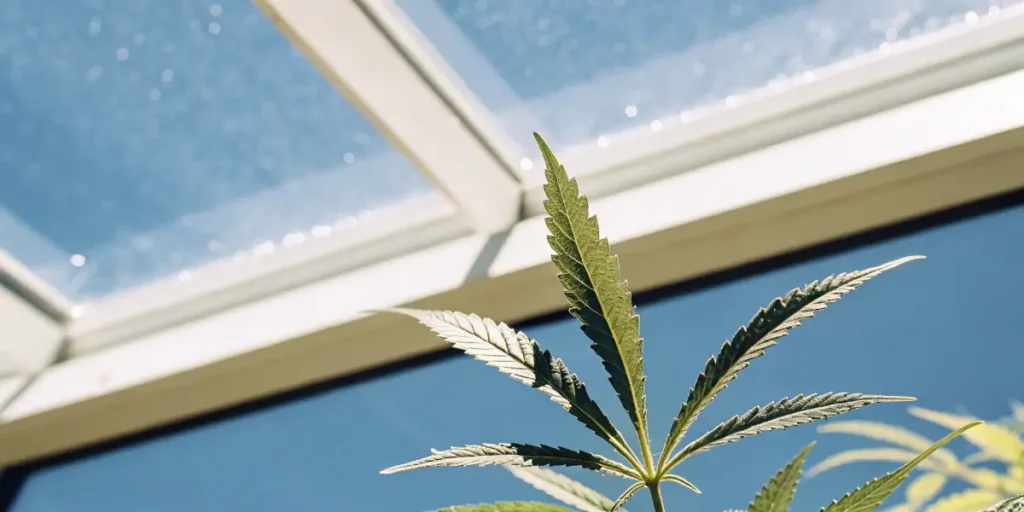
Importance of Relative Humidity on Cannabis Turgor
The importance of relative humidity on cannabis turgor cannot be overstated. Turgor pressure is what keeps your cannabis plants standing tall and healthy. Think of it like the air in a balloon. Without enough air, the balloon sags. Similarly, without the right turgor pressure, your cannabis plants can droop and wilt.
Relative humidity plays a crucial role in maintaining this pressure. It’s the amount of moisture in the air compared to what the air can hold at that temperature. When the air has the right amount of humidity, your cannabis plants can maintain the ideal turgor pressure. This means better growth and healthier plants.
Recommended Strains
Green Crack x AK47
-
THC: 14% - 17%
-
Type of seed: Feminized
-
Phenotype: 60% Sativa / 40% Indica
-
Flavor: Citrus, Herbal, Lemon, Skunk, Tropical
-
Day to flower: 8 - 10 weeks
AK 48
-
THC: 14% - 16%
-
Type of seed: Feminized
-
Phenotype: 35% Sativa / 65% Indica
-
Flavor: Citrus, Fruity, Herbal
-
Day to flower: 8 - 10 weeks
However, managing humidity isn’t always straightforward. Too much or too little can cause problems. Experienced growers know the balance is key. For those new to growing, knowing how humidity affects turgor can be a game-changer. Let’s dive deeper into how this works.
Optimal Relative Humidity for Cannabis Plant Turgor
Finding the optimal relative humidity for cannabis plant turgor is essential. During the vegetative phase, cannabis plants thrive at a higher humidity level. This is usually between 60% and 70%. At this stage, plants are growing rapidly, and the right humidity supports their development.
As the plants transition to the flowering phase, the optimal relative humidity should decrease. Aim for a range of 40% to 50%. This change helps prevent mold and mildew, which can damage the buds. Adjusting humidity levels as plants mature ensures they maintain strong turgor pressure throughout their lifecycle.
Maintaining the optimal relative humidity for cannabis plant turgor is not just about preventing physical symptoms. It also affects the physiological processes within the plant. Enzymatic activities, nutrient uptake, and even photosynthesis can be largely influenced by the humidity levels. Optimal conditions lead to healthier and more resilient plants.
Besides to growth phases, the specific strain can also dictate the optimal relative humidity for cannabis plant turgor. Different strains have varied tolerance to humidity levels, and knowing these nuances can lead to better cultivation practices. This is why monitoring and adjusting based on strain characteristics is crucial for achieving the best results.
Impact of Low Humidity on Cannabis Leaf Turgor Pressure
Low humidity can negatively impact cannabis leaf turgor pressure. When the air is too dry, plants lose water faster than they can absorb it. This leads to wilting and drooping leaves. A classic sign of low turgor pressure is the curling of leaves, often accompanied by a crispy texture.
For example, if you’re growing the AK-47 strain from Blimburn Seeds, and the humidity drops too low, you’ll notice the leaves starting to curl. This strain, like many others, requires careful humidity control to thrive.
Humidity management plays a critical role in preventing the impact of low humidity on cannabis leaf turgor pressure. When plants experience low humidity, they often enter a stress state, diverting energy from growth to survival. This stress can lead to lower yields and compromised quality of the final product.
Moreover, the impact of low humidity on cannabis leaf turgor pressure can also make plants more susceptible to pests and diseases. Stressed plants have a weakened immune response, making them easy targets for infestations and infections. Ensuring the right humidity levels can help maintain plant vigor and resilience.
Promos & Deals
Maintaining Cannabis Turgor Through Humidity Control
Controlling humidity is an art that can be mastered with practice. One practical method is using a combination of humidifiers and dehumidifiers. These devices help you adjust the humidity levels precisely, ensuring your plants remain at the optimal turgor pressure.
For first-time growers, a basic humidifier can make a world of difference. Place it in your grow space and monitor its effect on humidity levels. Over time, you’ll develop a sense of how your plants respond, allowing you to fine-tune the environment.
Maintaining cannabis turgor through humidity control is about creating a balanced environment that supports all aspects of plant health. Beyond mere survival, the right humidity levels enable optimal photosynthesis, which is critical for plant energy production and growth.
Another aspect of maintaining cannabis turgor through humidity control involves knowing how other environmental factors interact with humidity. Temperature, light, and airflow can all influence how humidity affects plant turgor. By considering these factors, growers can create a harmonious environment conducive to thriving plants.
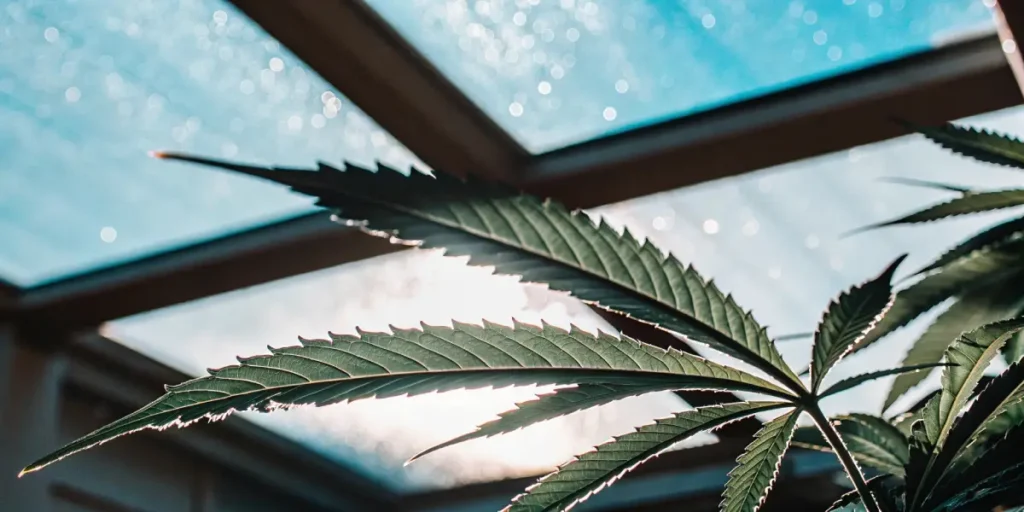
Role of Humidity in Cannabis Turgor and Growth
Humidity plays a significant role in both cannabis turgor and overall growth. It’s not just about keeping plants erect; it’s about ensuring they get the nutrients they need. When the humidity is right, plants can efficiently take in water and nutrients, leading to robust growth.
Consider the Blue Dream strain. Known for its vigorous growth, this strain benefits greatly from optimal humidity levels. Without the right humidity, even a resilient strain like Blue Dream can suffer.
The function of humidity in cannabis turgor and growth is integral to achieving high-quality yields. Proper humidity levels contribute to the production of cannabinoids and terpenes, which define the potency and aroma of the plant. Thus, humidity management is crucial for both aesthetic and functional qualities of cannabis.
Furthermore, the importance of relative humidity on cannabis turgor is evident when considering the plant’s lifecycle. Each stage of growth has specific humidity requirements that align with the plant’s developmental needs. This tailored approach ensures that plants not only grow but thrive, maximizing their genetic potential.
Relative Humidity Effects on Cannabis Plant Cell Turgidity
Relative humidity directly affects cannabis plant cell turgidity. Turgid cells are full and firm, giving the plant its structure. If the cells lose water due to low humidity, they become flaccid, and the plant starts to droop.
Take the Critical Daddy Purple strain. This strain loves a stable environment. Fluctuations in humidity can reduce cell turgidity, affecting the plant’s overall health and yield.
The relative humidity effects on cannabis plant cell turgidity can be profound. When cells are turgid, they facilitate better nutrient and water transport, critical for sustaining plant health and growth. This cellular vitality is directly linked to the plant’s ability to produce flowers and seeds.
Moreover, stable humidity levels contribute to consistent cell turgidity, which is essential for photosynthesis and energy production. When cells maintain their structure, the plant can optimize its energy use, translating into better growth rates and higher yields. Thus, keeping relative humidity in check is vital for maximizing plant potential.
Practical Tips for Managing Humidity
Managing humidity requires attention to detail. Start by investing in a reliable hygrometer. This device measures the humidity in your grow space, providing real-time data you can act on. Place it at canopy level for the most accurate readings.
Another tip is to ventilate your grow room properly. Good airflow helps regulate humidity levels. Fans can be used to circulate air, preventing moisture from building up in one spot. This practice is especially important during the flowering stage.
Practical tips for managing humidity also include knowing the unique requirements of your specific cannabis strains. Some strains may naturally thrive in higher or lower humidity environments, and adjusting your approach accordingly can lead to more successful growth outcomes.
Additionally, integrating technology, such as automated humidity control systems, can greatly enhance your ability to maintain consistent conditions. These systems can adjust humidity levels in real-time, responding to environmental changes and ensuring your plants always have the optimal conditions needed for healthy growth.
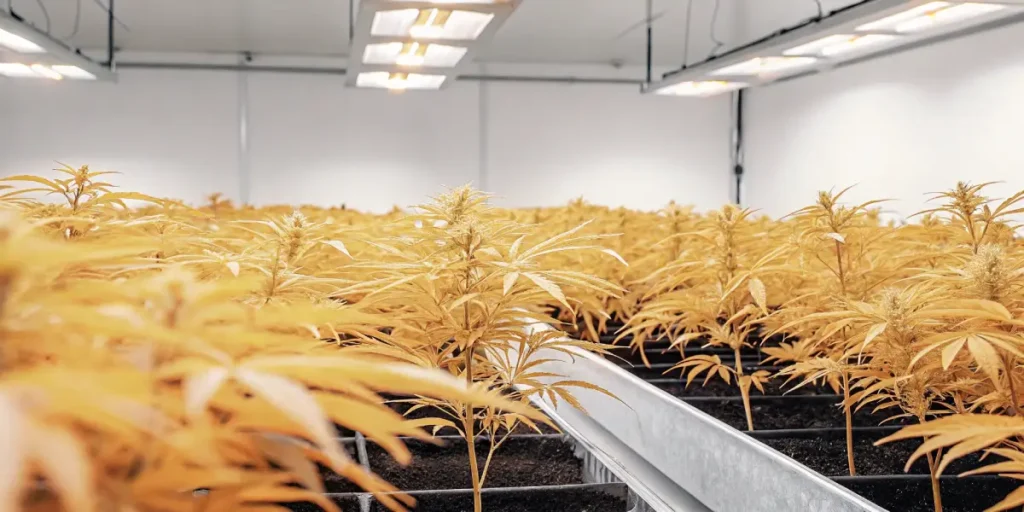
FAQs
What is the optimal relative humidity for cannabis plant turgor?
The optimal relative humidity for cannabis plant turgor varies depending on the growth stage. During the vegetative phase, aim for 60% to 70% humidity. This range supports rapid growth and strong turgor pressure. As plants enter the flowering stage, reduce the humidity to 40% to 50%. This helps prevent mold while maintaining healthy turgor pressure.
Adjusting humidity levels according to the plant’s lifecycle is crucial. It ensures that the plant maintains the right turgor pressure, facilitating nutrient uptake and growth. Regular monitoring and adjustments will help keep your plants healthy and robust.
Knowing the optimal relative humidity for cannabis plant turgor is essential for achieving the best harvest. Each growth stage has unique needs, and meeting these ensures that plants are not only healthy but also reach their full potential in terms of yield and quality.
By keeping a close eye on the optimal relative humidity for cannabis plant turgor, growers can avoid common pitfalls such as nutrient lockout and mold infestations. This proactive approach can lead to a more successful and rewarding grow cycle, resulting in high-quality cannabis.
How does low humidity impact cannabis leaf turgor pressure?
Low humidity can significantly impact cannabis leaf turgor pressure. When humidity is too low, plants lose water faster than they can replace it. This results in reduced turgor pressure, causing leaves to droop and curl. It’s a sign that the plant is stressed and struggling to maintain its structure.
To combat low humidity, consider using a humidifier. It helps increase the moisture in the air, allowing the plant to maintain adequate turgor pressure. Regularly check humidity levels to ensure they remain within the optimal range for your plants’ growth stage.
The impact of low humidity on cannabis leaf turgor pressure is not just physical but can also affect the plant’s overall health. Chronic low humidity can lead to stunted growth, reduced yields, and a lower quality end product. Thus, addressing humidity issues promptly is crucial.
Furthermore, educating oneself about the impact of low humidity on cannabis leaf turgor pressure can empower growers to make informed decisions. By knowing how humidity interacts with other environmental factors, growers can create a balanced and thriving grow space.
Why is maintaining cannabis turgor through humidity control important?
Maintaining cannabis turgor through humidity control is crucial for plant health. Turgor pressure keeps the plant upright and facilitates nutrient transport within the plant. Without the right humidity, plants can experience stress, leading to reduced growth and yield.
Humidity control is particularly important during transitions between growth stages. Each stage requires different humidity levels to optimize turgor pressure. By keeping a close eye on humidity, you can ensure your plants remain healthy and productive.
Maintaining cannabis turgor through humidity control also enhances the plant’s ability to produce the desired cannabinoids and terpenes. These compounds are what give cannabis its unique effects and flavors, making humidity control a key factor in achieving a high-quality product.
Moreover, maintaining cannabis turgor through humidity control helps mitigate the risks of pests and diseases. A stable environment reduces stress on plants, making them less susceptible to infestations and infections. This proactive approach promotes healthier and more resilient plants.
How does humidity affect cannabis plant cell turgidity?
Humidity directly affects cannabis plant cell turgidity by influencing water retention. Turgid cells are filled with water, maintaining the plant’s structure. When humidity is low, cells lose water, become flaccid, and the plant starts to droop.
To maintain cell turgidity, it’s important to keep humidity levels stable. Use a combination of humidifiers and dehumidifiers to adjust the environment as needed. This ensures that your plants maintain their structure and continue growing healthily.
Knowing how humidity affects cannabis plant cell turgidity is crucial for optimizing plant health. Turgid cells support robust growth and efficient nutrient uptake, contributing to the plant’s overall vitality and yield potential.
Additionally, maintaining optimal humidity conditions helps ensure that cells remain turgid, which is essential for processes like photosynthesis and transpiration. These processes drive plant growth and energy production, highlighting the importance of relative humidity on cannabis turgor.
What are some practical tips for managing humidity in a grow space?
Managing humidity in a grow space starts with investing in a reliable hygrometer. This tool measures humidity levels, providing data to guide your adjustments. Place it at canopy level for the most accurate readings.
Ventilation is also key. Use fans to promote air circulation, preventing moisture from accumulating in one area. Gradual adjustments to humidity levels help avoid shocking your plants, allowing them to adapt to changes smoothly.
Besides to using a hygrometer, consider implementing automated systems that can adjust humidity levels in real-time. These systems can take some of the guesswork out of humidity management, ensuring a stable environment for your plants.
Furthermore, consider the use of environmental controls that integrate temperature, light, and humidity adjustments. These comprehensive systems ensure that all aspects of the grow environment are optimized, providing the best conditions for your cannabis plants to thrive.


